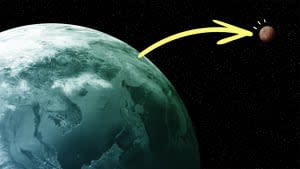NASA's return to Venus

NASA announced last week that for the first time in more than 30 years, it is sending not one, but two missions to Venus. What does the space agency hope to accomplish?
Hasn't NASA explored Venus before?
Yes. In 1962, Venus became the first planet to be explored by a spacecraft, when NASA's Mariner 2 flew by, sending back information about the planet's atmosphere and recording its temperature for the first time. The then-Soviet Union also took an interest in Venus, and beginning in the 1960s sent several probes to the planet. Its Venera 13 probe made history when it landed on the surface of Venus in 1982. Due to the hostile environment, the probe was only able to handle about two hours on the planet before it succumbed to the intense heat and pressure, but the probe did capture photos of Venus' surface and a recording of atmospheric wind noises. Seven years later, NASA sent its Magellan spacecraft to orbit Venus.
What did we learn from the Magellan?
A whole lot. The spacecraft was launched on May 4, 1989, and once it arrived in Venus' orbit, began collecting a treasure trove of information. The spacecraft was the first to image the surface of Venus, sending back clear radar images showing evidence of volcanism and miles of lava channels. After four years, Magellan purposely plummeted into Venus' atmosphere so it could collect aerodynamic data, and the spacecraft burned up about 10 hours later. Images captured by Magellan were used to create high-resolution radar maps of Venus' surface, which are still utilized today.
Why go back?
Venus is often referred to as "Earth's Twin" because the planets are similar in size, mass, density, and volume. They're also believed to have formed at around the same time billions of years ago. But there's still a lot we don't know about Venus, and scientists say studying the planet will help them better understand "how Earth evolved and why it's habitable when others in our solar system are not."
So Venus isn't habitable?
While humans couldn't survive on Venus, a team of scientists announced last September that they detected phosphine — a toxic gas compound — in the planet's atmosphere. On Earth, some living organisms, such as anaerobic bacteria, produce the gas "quite happily," according to Massachusetts Institute of Technology molecular astrophysicist Clara Sousa-Silva. But the team hasn't been able to determine how the phosphine on Venus was produced — in theory, it should break down in the planet's acidic atmosphere. Some skeptics are waiting for another group of researchers to confirm phosphine's presence. The reported findings prompted NASA to "prioritize Venus."
Just how hot is Venus?
Compared to Earth, Venus is a hellscape. It has a thick, incredibly dense atmosphere that traps heat, and the planet is covered by yellowish clouds made of sulfuric acid that are constantly moving due to hurricane-force winds. Those clouds reflect 70 percent of all sunlight that reaches Venus, which is why the planet shines so bright in the night sky. Venus' surface is a scorching 887 degrees Fahrenheit, with air pressure that is more than 90 times that of Earth's — it's close to the pressure found 3,000 feet under the ocean.
What exactly will these new missions to Venus entail?
The two missions — DAVINCI Plus (Deep Atmosphere Venus Investigation of Noble Gases, Chemistry, and Imaging Plus) and VERITAS (Venus Emissivity, Radio Science, InSAR, Topography, and Spectroscopy) are set to launch between 2028 and 2030. DAVINCI Plus will be tasked with taking high-resolution images of Venus' surface, with a particular focus on the geological features that may be comparable to the Earth's continents. This mission will also involve measuring the composition of Venus' atmosphere, with scientists aiming to determine whether the planet ever had an ocean. VERITAS will use radar to map Venus' surface. Little is known about the planet's rock type, and this mapping will likely change that, as well as answer questions about any plate tectonics and active volcanoes that may be on the surface. "It is astounding how little we know about Venus, but the combined results of these missions will tell us about the planet from the clouds in its sky through the volcanoes in its surface all the way down to its very core," NASA scientist Tom Wagner said. "It will be as if we rediscovered the planet."
Could they tell us more about other parts of the universe?
That's the hope. Thomas Zurbuchen, NASA's associate administrator for science, said the space agency is "revving up our planetary science program with intense exploration of a world that NASA hasn't visited in over 30 years," using "cutting-edge technologies" that have been developed and refined during the past three decades. NASA's goals for the DAVINCI Plus and VERITAS missions are "profound," Zurbuchen said. "It is not just understanding the evolution of planets and habitability in our own solar system, but extending beyond these boundaries to exoplanets, an exciting and emerging areas of research for NASA."
